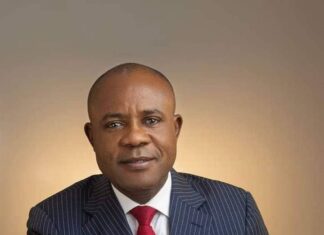Many are the schools of thoughts concerning what actually sparked off the Renaissance.
For the benefit of the unschooled in art and culture, the Renaissance was a period between the 14th and the 16th centuries when great advancement and progress was recorded in human history in Europe; in every sphere of life, especially in art and culture.
It was a period of great revival of art, literature, and knowledge in other disciplines. This is why some definitions of the Renaissance start with … ‘The Renaissance was a cultural movement…’
Yes! How did the Renaissance start?
I start with the people who said the Renaissance (‘Rebirth’ in English) started from the competition between two rival arts geniuses bidding to hitch a contract to build the doors of a baptistery in Italy.
Story has it that in 1401 when Florentine geniuses Lorenzo Ghiberti and Filippo Brunelleschi competed for the contract to build the bronze doors for the Baptistery of the Florence Cathedral, and Ghiberti won, it sparked off a healthy rivalry between the two to outdo each other and this sparked off the Renaissance.
The two remained rivals until death parted them. Rivalry that sparks off competitions to outdo is healthy.
Ghiberti was a goldsmith and a sculptor in metal, a fine craftsman – Michelangelo called his bronze doors of the Florence Cathedral Baptistery, the Gates of Paradise! It was Ghiberti who began the painting on bronze sculptors.
Brunelleschi was on the other hand, an Italian architect and designer; known to be the father of modern engineering; a planner and sole construction supervisor.
When two great minds compete…hmmm.
Others believed that the Renaissance began from a general competition involving such artists and polymaths such as Brunelleschi, Ghibert, Donatello, and Masaccio for artistic commissions that sparked off the creativity of the Renaissance.
This argument is not far from the first. Healthy competition breeds new things and thus advancement.
Yet, there is another notion worth looking at before we proceed. It is the argument that the Renaissance was a product of “Secular curiosity.”
This is very interesting. All hypotheses may be true.
History has it that the long feudal period in Western Europe declined after the *Black Death. Hitherto, the church had held sway, being in charge of education and every other development from time immemorial. Then after the scourge of the Black Death, there was a decline in feudal power and a new secular curiosity arose.
It seems like after the Black Death which seemed to have received no solution from the church or feudal lords (my personal thoughts really), the common people began to find or look for interests in other things.
Then, the rediscovery of classical Greek philosophy happened, such as that of Protagoras, who said that “Man is the measure of all things.” The philosophy of Humanism evolved. The teaching which postulated that man is a rational being, spread throughout Europe. This emphasized the dignity and worth of individuals, and classical culture was promoted.
The medieval man was made to understand the need to learn ancient Greek and Latin in order to read the ancient manuscripts. Classicism could only be studied in those languages. There was increased emphasis on the importance of education. This new thinking became manifest in art, architecture, politics, science and literature.
Things began to unfold, such as the development of perspectives in oil painting and the recycled knowledge of how to make concrete. Then the availability of paper, the invention of the movable type (first created by Bi Sheng (990-1051); remember that the printing press was invented in 1440), all added to the dissemination of ideas from the later 15th century.
Note that the Renaissance movement was slow in Europe.
Those who postulated that the Renaissance started in Florence, Italy, said that the Fall of *Constantinople (6 April 1453 – 29 May 1453) at the hands of Ottoman Turks necessitated the movement of Greek scholars and their texts into Italy; the social and civic customs of Florence at that time, and its political structure, the patronage of its dominant family at the time, the Medici, all these contributed to the Renaissance starting from Florence, Italy.
The Medici family, the foremost aristocrats of Florence, Italy, supported arts and cultural advancements with their resources.
A Digression:
What the Medici family did in 15th century Florence was what Henry VIII did for John Skelton (1460-1529). Rulers and the government should support arts and cultural development in order to foster progress and advancements in the land. There should be grants for scholars (grants for PhD, researches, etc) so they could do researches and bring about advancements in all spheres of life.
At this time in the history of Europe, in Florence, Italy to be precise, great awakening had begun.
Not only the aristocrats, but some members of the middle class were becoming interested in writings. And what were readily available and worthy of disseminating was the classical antiquities, the works of such great minds as Vigil, Homer, etc. With the invention of not only printing press, but movable printing machines, these ancient works became more available on paper. So, many gained access to them.
Some other notion has it that the writings of Dante Alighieri (1267-1321) and Petrarch (1304-1374) sparked off the Renaissance, as well as the paintings of Giottodi Bondone (1267-1337).
However, some scholars questioned the nature of the Renaissance. Was it a cultural revolution or an evolution? Some believed it was a cultural advancement while some believed that it was a pessimistic nostalgia for classical antiquity.
I do not agree with the latter, unless the argument adds that the Renaissance started as a pessimistic nostalgia for classical antiquity, which sparked of fresh creativity. This is because development happened in the Renaissance; creativity was stirred.
The word Renaissance is a French word that means Rebirth in English. It first appeared in English writings from the 1830s, and in Jules Michelet’s 1885 work, Histoire de France.
It was a cultural boom, it was impressive and undeniable.
Markers of the Renaissance:
Petrarch was an Italian scholar and poet in Renaissance Italy, one of the earliest humanists.
What’s humanism? Humanism is a movement that emphasized the importance of creating citizens who were able to engage in the civil life of their community.
Great minds of the European Renaissance: Michelangelo, Leonardo da Vinci, Petrarch, etc. Also we shall look at the Poets of the Renaissance.
*The Black Death was a plague in the Middle Ages that wiped out the third of Europe’s population. It was a very infectious disease transmitted to humans through oriental rats infected by a bacterium called yersinia pestis. The Black Death disease was characterized by darkened skin because victims had under the skin hemorrhage and gangrene of the nose, fingers and toes.
*The Fall of Constantinople (an important city in Italy) brought an end to the Eastern Roman Empire, and brought to power the Ottomans who ruled southeastern Europe and the eastern Mediterranean. The Ottoman conquest hurt trades severely in the European region and fleeing Greek scholars, headed to Florence, Italy.
To be continued…













